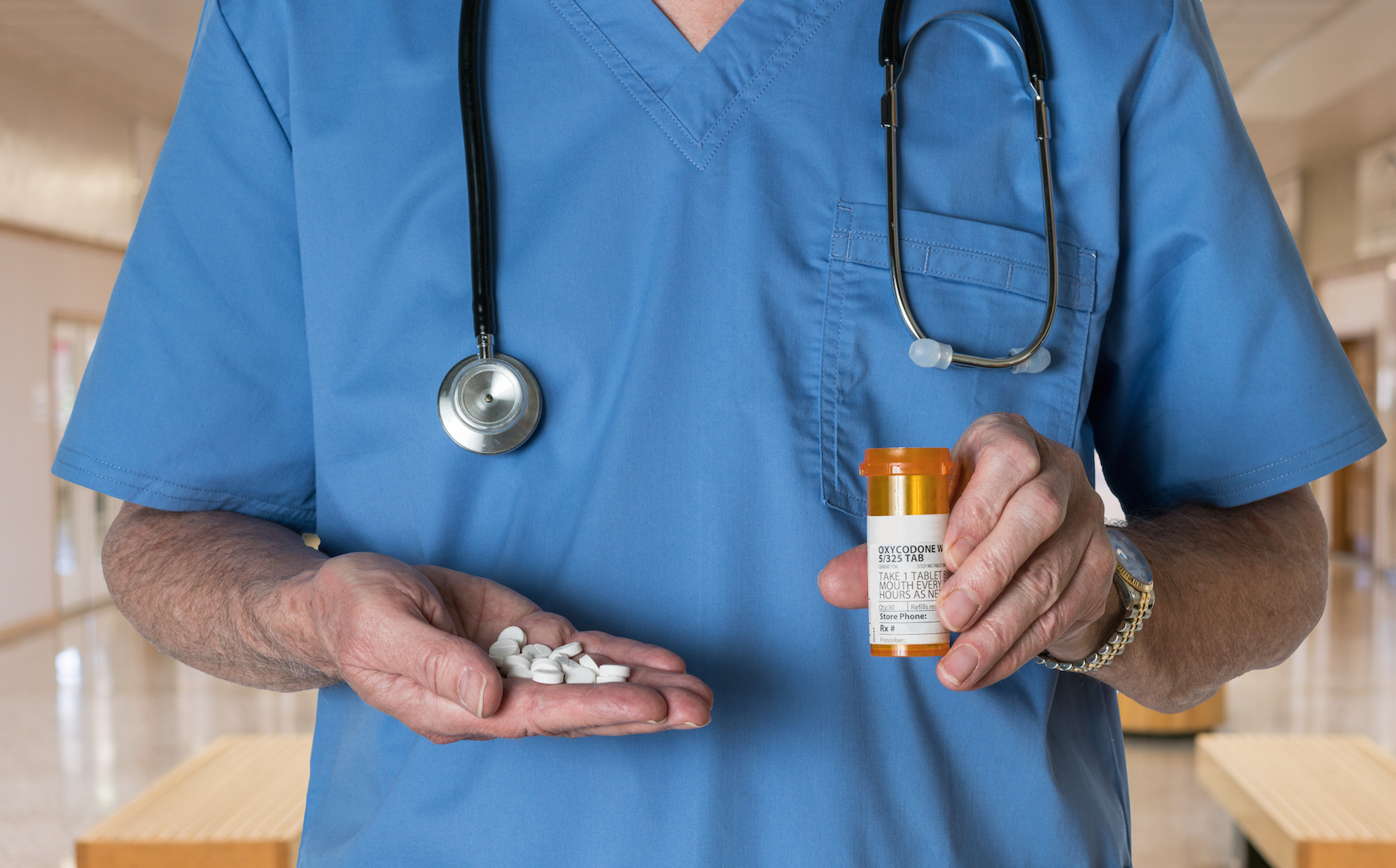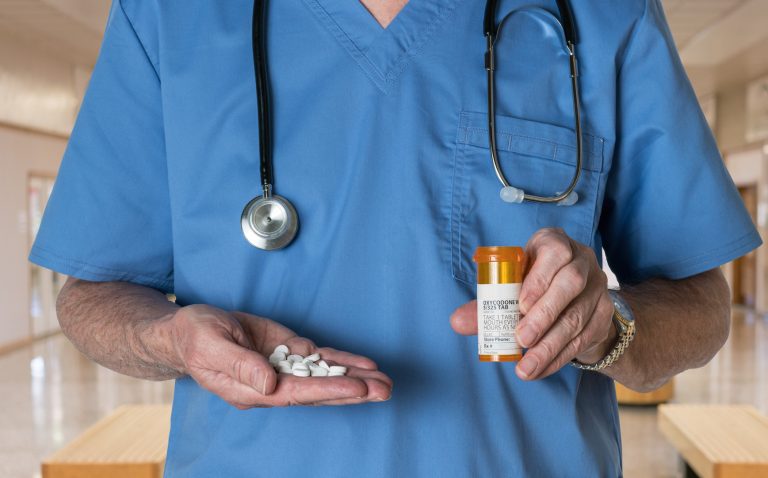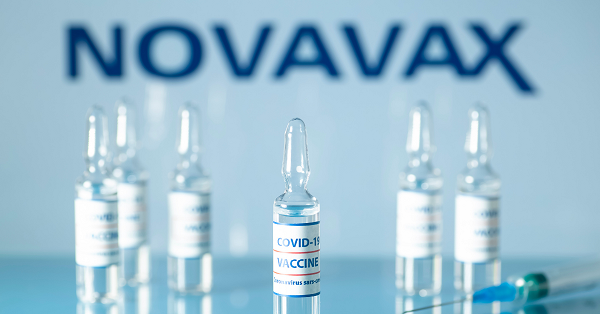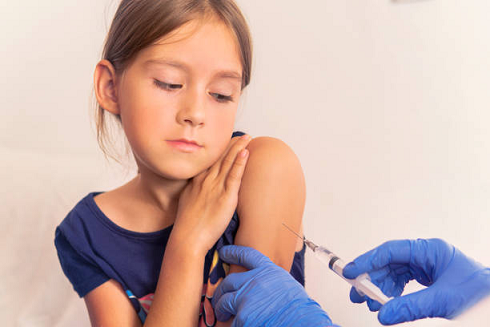
If you’re a U.S. adult and don’t regularly take a prescription drug, you’re now in the minority, according to a survey of nearly 2,000 U.S. adults by Consumer Reports.1 The revealing sample found that more than half of U.S. adults regularly take prescription medications, and the average adult takes four. If it seems like your friends and family are taking more drugs than they did in the past—or if adults use more meds than they did when you were a kid—it’s not in your imagination, either.
Consumer Reports found that the total number of prescriptions filled by Americans (including children) increased by 85 percent from 1997 to 2016—but the total U.S. population increased by only 21 percent during that time.
$200 Billion a Year Spent on Improper Use of Prescription Drugs
In some cases, prescription drugs are necessary, but in many they are not. In fact, a report by QuintilesIMS, formerly known as IMS Health, Institute for Healthcare Informatics revealed that $200 billion a year, or 8 percent of U.S. health care spending, is spent on medical care resulting from improper or unnecessary use of prescription drugs.2
Medication errors and problems that arise from taking multiple medications are key problems, as is the misuse of antibiotics and inappropriate prescribing. According to the U.S. Food and Drug Administration (FDA), meanwhile, more than 2 million serious adverse drug reactions (ADRs) occur every year in the U.S, leading to 100,000 deaths. ADRs are actually the fourth leading cause of death in the U.S., causing more deaths than pulmonary disease, diabetes, AIDS, pneumonia and accidents, including car accidents.3
What’s more, these ADR statistics do not include the ADRs that occur among ambulatory (i.e., non-bedridden) patients, or those in nursing homes, the latter of which is estimated to be 350,000 yearly. The FDA calls ADRs “a significant public health problem that is, for the most part, preventable, noting that costs associated with ADRs are $136 billion a year, which is more than the total costs relating to cardiovascular or diabetic care.
In addition, ADRs are responsible for 1 out of 5 injuries or deaths per year among hospitalized patients, and when an ADR does occur, the mean length of hospital stay, cost and mortality rate is double that for control patients.4
Seventy-Five Percent of Doctor Visits End With a Prescription
“About three-quarters of all visits to a physician end with a drug prescription,” according to a report in the journal Health Affairs.5 The FDA put the number at closer to two-thirds. Either one is shocking, as is the fact that the average American adult takes four prescription drugs, and 75 percent of Americans take at least one over-the-counter drug regularly as well.6 As the FDA notes, “ADRs increase exponentially with four or more mediations.”7
For starters, many new drugs are brought to market after being tested on an average of 1,500 patient exposures, according to the FDA, which may not be enough to detect serious risks before they’re unleashed upon the masses. “Some drugs cause serious ADRs at very low frequencies and would require many more exposures to detect the reaction,” the FDA stated.8 Further, as Consumer Reports found:9
The percentage of Americans taking more than five prescription medications has nearly tripled in the past 20 years, according to the Centers for Disease Control and Prevention. And in our survey, over a third of people 55 and older were taking that many drugs; 9 percent were taking more than 10.
… And seeing more than one doctor is now the norm: 53 percent of those in our survey taking prescription medications said they received them from two or more providers.
This only increases the risk of harm, as there may be no communication between a patient’s numerous health care providers. And unless you specifically bring up the medications you’re taking, a doctor may not consider them when giving you a new prescription.
You Can’t Depend on Your Pharmacist to Catch Dangerous Drug Interactions
Many people depend on their doctors and pharmacies to not prescribe or dispense potentially contraindicated drugs, but doctors are not always aware of all the medications their patients are taking (or their potentially dangerous interactions), and any fail-safes in place at pharmacies are also not measuring up.
In a Chicago Tribune investigation of 255 U.S. pharmacies, it turned out that dangerous drug combinations are putting millions of Americans at risk, representing an “industrywide failure.”10 Fifty-two percent of the pharmacies investigated handed out drug combinations that could result in stroke, kidney failure, oxygen deprivation, unintended pregnancy, birth defects and other health risks.11
The Illinois Department of Financial and Professional Regulation requires pharmacists to alert the prescribing doctor if a serious interaction risk is detected, to determine if the prescription is correct and whether an alternative is available. Pharmacists were considered to have “passed” the test if they either contacted the prescribing doctor or warned the reporter about the drug interactions, but in most cases this wasn’t done.
Simply stapling an informational sheet to the prescription was not deemed to provide sufficient warning, as many people simply throw the pamphlets away without reading them.12 Pharmacies do use computer software designed to flag potential interactions, but the alerts may occur so often that pharmacists start to glaze over them and may miss some of the most important warnings, the Tribune reported.
Increase in Drugs, Decrease in Life Expectancy
As the rate of prescription drug prescribing grows ever higher, U.S. life expectancy is not enjoying the same fate. In 2015, the latest year for which data is available, life expectancy for Americans dropped—from 78.9 years in 2014 to 78.8 years in 2015. It’s a small change, but one that deserves increasing scrutiny, especially in light of the opioid epidemic and rising rates of obesity and chronic diseases driven by unhealthy lifestyles. U.S. life expectancy is also lower than in many other countries, as STAT News reported:13
In 2015, life expectancy at birth in the U.S. was nearly 79 years, compared to 81 in the European Union. More than 30 nations have life expectancies exceeding ours, including Hong Kong and Japan (the highest at 84 each), as well as France, Iceland, Italy, Singapore, Spain, Sweden, and Switzerland (at 83 each).
Even Cuba, with many fewer resources for health care than in the U.S., beats us (at 80). The poorest men in America have life expectancies similar to men in Honduras and Paraguay.
The cost of health care in the U.S. is also the highest in the world, and continues to rise. Health care now accounts for 17 percent of the gross domestic product (GDP).14 But even though the U.S. spends more than $3 trillion on health care each year, it is the worst performing system ranked by multiple aspects of care.15
Research also shows that most U.S. adults (more than 52 percent) are living with at least one chronic medical condition, mental illness or substance abuse/dependence, with “substantial overlap across the conditions.”16 Unfortunately, throwing more drugs at the problem, and then additional drugs to treat the inevitable side effects, only makes the problem worse. The system is rooted in maximized profits as opposed to helping people maintain or regain their health.
The majority of the diseases we’re trying to “manage” in this manner are lifestyle-related, and if you don’t address this root cause, you’ll never get better. You’re just paying for overpriced bandages that do absolutely nothing to fix the underlying cause and create long-term health and wellness. From ADHD to back pain, heartburn and mild depression, all of these are chronic conditions that are often better treated with lifestyle changes and other nondrug options than prescription meds.
Protecting Yourself From Dangerous Medication Errors
If you’re currently taking prescription drugs, every time you take a medication, ask your doctor and your pharmacist about the side effects and whether it’s safe to take with any other medications (prescription or over-the-counter) or supplements you’re currently taking.
Many common medications, including antibiotics, antidepressants and cholesterol and high blood pressure meds, can be dangerous if taken in the wrong combinations, so don’t simply assume any combination of drugs is safe because your doctor or pharmacist prescribed and dispensed it.
Make a point of asking if the drugs you’re prescribed are safe when taken together, and remind both your doctor and the pharmacist about your other medications (including over-the-counter drugs). Ask, and then ask again, and if you experience any unusual symptoms after taking a new combination of drugs, ask your health care providers if the drug combination could be to blame.
The ‘Deprescribing’ Trend
It’s unusual for doctors to de-prescribe drugs, i.e., take patients off medications, but a number of physicians are joining the “deprescribing” trend and doing just that. “Deprescribing is the process of tapering, stopping, discontinuing or withdrawing drugs, with the goal of managing polypharmacy and improving outcomes,” a report in The Canadian Journal of Hospital Pharmacy explained.17
At your next physician’s visit, ask your health care provider if the drugs you’re taking are still necessary, or whether you could reduce your dosages or try nondrug treatment options instead. “There’s a big push in our country to practice medicine as if we are fixing machines with a broken part,” Dr. Victoria Sweet told Consumer Reports.
“Take the pill, fix the symptom, move on. ‘Slow medicine’ means taking time to get to the bottom of what’s making people sick—including medications in some cases—and giving the body a chance to heal.”18 The problem, as Dr. Michael Finkelstein, aka “the Slow Medicine Doctor,” realized, is that even the best medical schools aren’t preparing physicians to heal patients properly.
Instead, they’re trained in what is essentially fast medicine—surgery and prescription drugs, but nothing to get to the root cause of the disease. In addition, the entire health care system is primed for this approach, with insurance companies covering primarily conventional approaches like medications but not necessarily safer options like acupuncture, chiropractic care, cognitive therapy and more.
Lifestyle changes, including healthy diet, are key, however, as is attention to your emotional health and happiness. Deprescribing is also often a part of the solution to feeling better. Research on the topic is growing, with promising results geared toward giving physicians guidelines on how to effectively help their patients get off unnecessary drugs. One review found that in many cases “medications could be successfully withdrawn with little to no harm to the patient; some trials also demonstrated benefits such as reduced fall risk.”19
Ultimately, reducing your reliance on prescription and over-the-counter drugs is your best protection against drug interactions, and often is the route to improved health and wellness. This is done foundationally, by leading a healthy lifestyle and taking control of your health.
References:
1 Consumer Reports August 3, 2017
2 Medscape June 20, 2013
3 U.S. FDA, Preventable Adverse Drug Reactions
4 See Footnote 3
5 Health Affairs September 2001
6 See Footnote 1
7 See Footnote 3
8 See Footnote 3
9 See Footnote 1
10 Chicago Tribune December 16, 2016
11 See Footnote 10
12 Chicago Tribune December 15, 2016
13 STAT News July 31, 2017
14 The Fiscal Times, December 2015
15 CommonwealthFund, 2014, MIRROR, MIRROR ON THE WALL
16 Psychol Health Med. 2017 Jul;22(6):727-735.
17 Can J Hosp Pharm. 2013 May-Jun; 66(3): 201–202.
18 See Footnote 1
19 See Footnote 17













10 Responses
I was recently told by a nurse that I was “her hero” because I was not on any medications at my age (53). She was in awe … I thought it was simple common sense, attributed to lifestyle choices and not believing the hype that pills or vaccines are the answer.
I had a similar experience with my primary doc recently during a new patient exam. She said she couldn’t believe how healthy I am for someone *not* on any medication at my age (47). I laughed in her face because I couldn’t believe she said that!
In the absence of regulation and prohibition, most of these substances and ensuing medical effects would be reduced and dangers minimized. We’d be consuming pure organic pure source rather than synthesized and cleverly patented. We’d be getting recommendations from herbalist pros, not prescription from industry directed salesmen. We don’t have an opioid problem, we have a problem with prohibition. In the absence of regulation the substances would not be nearly as condensed and dangerous, pre-potentiated through manufacturing and partner prescription recommendations. It’s hard to profit from a proprietary substance when it’s legal to source yourself in the free market. I maintain the position the primary problem is prohibition, which led to all this in a complex web of deceptive correlations. “If you’re not free to make a bad decision, you’re not really free.” Who trusts pro-prohibitionists to look out for their best interests? Raise your glass and be counted.
If you’re having trouble refilling a script, just threaten to quit taking the stuff. Yep, just threaten to quit taking some prescription drug you’ve been taking for a long time and you will get the quickest action you’ve ever seen when it comes to getting a refill, even on a “controlled substance”.
It’s disgusting how doctors’ offices will fawn all over you if they want you to do something for their welfare. Hey, it’s certainly not for your welfare . . .
https://thoughtscapism.com/2015/04/10/myth-no-studies-compare-the-health-of-unvaccinated-and-vaccinated-people/
My two most recent doctor visits for specific issues were perfect examples of this phenomenon. One was for a bunion, for which the podiatrist automatically suggested surgery. When I balked, she then reluctantly suggested orthotic insoles as a second option, but warning that I would “have to get surgery eventually, and the longer I waited, the worse it would be.” (eyeroll) That was several years ago; I did neither and it hasn’t gotten any worse (or been a problem).
The second one was for tennis elbow, for which my primary doctor automatically prescribed an anti-inflammatory drug (Naproxen), without even asking for my consent. When I refused, saying I’d rather research natural/alternative options, she was visibly taken aback. I was surprised.
Bottom line is don’t allow your doctor to bully/guilt/shame/scare you into doing something you don’t want. It’s your life/body, of which YOU are in charge.
Not having health insurance nowadays is terrible, and your good health happened to be a positive side effect, which could have easily been absolutely negative.
It is an epidemic. There is so much over-medication and mis-medication, and over-diagnosis and mis-diagnosis, the medical establishment is out of control.
If you’re having trouble refilling a script, just threaten to quit taking the stuff. Yep, just threaten to quit taking some prescription drug you’ve been taking for a long time and you will get the quickest action you’ve ever seen when it comes to getting a refill, even on a “controlled substance”.